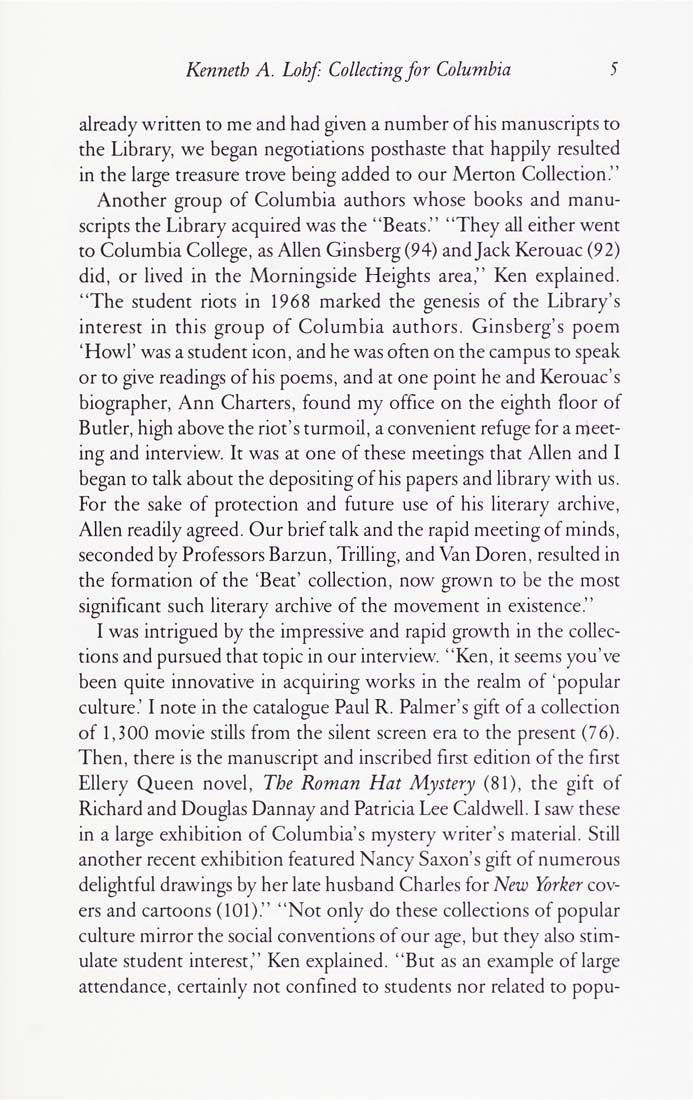Columbia Library columns (v.42(1992Nov-1993May))
(New York : Friends of the Columbia Libraries. )
|
||
|
|
|
|
| v.42,no.1(1992:Nov): Page 5 |

Kenneth A. Lohf Colleaingfor Columbia 5 already written to me and had given a number of his manuscripts to the Library, we began negotiations posthaste that happily resulted in the large treasure trove being added to our Merton Collection." Another group of Columbia authors whose books and manu¬ scripts the Library acquired was the "Beats." "They all either went to Columbia College, as Allen Ginsberg (94) and Jack Kerouac (92) did, or lived in the Morningside Heights area," Ken explained. "The student riots in 1968 marked the genesis of the Library's interest in this group of Columbia authors. Ginsberg's poem 'Howl' was a student icon, and he was often on the campus to speak or to give readings of his poems, and at one point he and Kerouac's biographer, Ann Charters, found my office on the eighth floor of Butler, high above the riot's turmoil, a convenient refuge for a meet¬ ing and interview. It was at one of these meetings that Allen and I began to talk about the depositing of his papers and library with us. For the sake of protection and future use of his literary archive, Allen readily agreed. Our brief talk and the rapid meeting of minds, seconded by Professors Barzun, Trilling, and Van Doren, resulted in the formation of the 'Beat' collection, now grown to be the most significant such literary archive of the movement in existence." I was intrigued by the impressive and rapid growth in the collec¬ tions and pursued that topic in our interview. ' 'Ken, it seems you've been quite innovative in acquiring works in the realm of 'popular culture.' I note in the catalogue Paul R. Palmer's gift of a collection of 1,300 movie stills from the silent screen era to the present (76). Then, there is the manuscript and inscribed first edition of the first Ellery Queen novel, The Roman Hat Mystery (81), the gift of Richard and Douglas Dannay and Patricia Lee Caldwell. I saw these in a large exhibition of Columbia's mystery writer's material. Still another recent exhibition featured Nancy Saxon's gift of numerous delightful drawings by her late husband Charles for New Yorker cov¬ ers and cartoons (101)." "Not only do these collections of popular culture mirror the social conventions of our age, but they also stim¬ ulate student interest," Ken explained. "But as an example of large attendance, certainly not confined to students nor related to popu- |
| v.42,no.1(1992:Nov): Page 5 |







